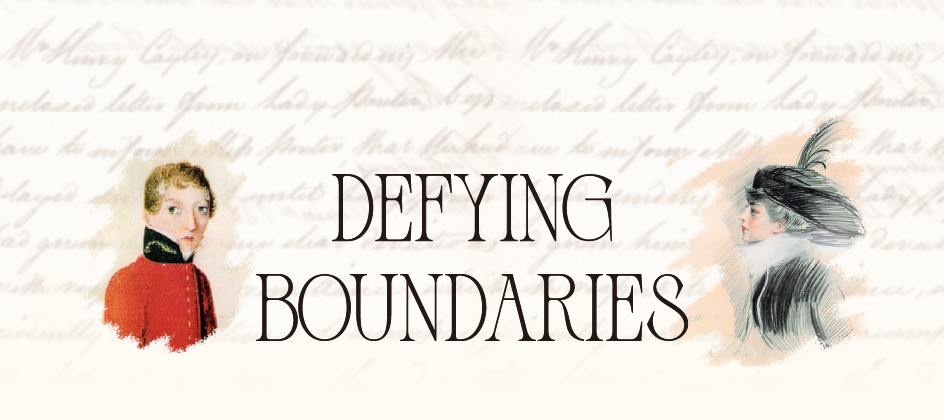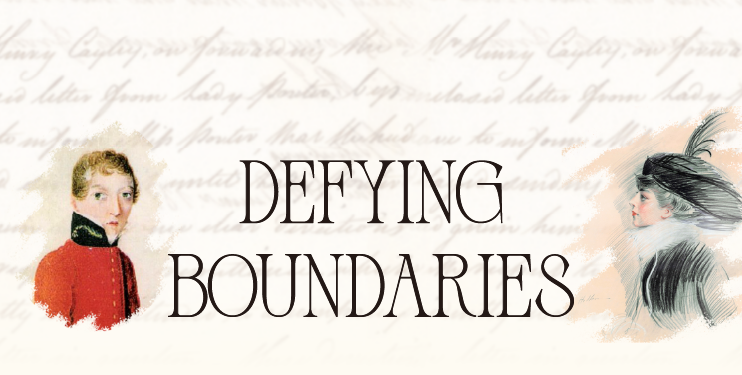

Throughout history, people have concealed truths about themselves—race, sexuality, religion, and so on—not only to survive but also to thrive in a society that might otherwise reject them. Two such remarkable figures are James Barry and Belle da Costa Greene, whose extraordinary achievements were only possible because of a secret they took to their graves.
James Barry
In the summer of 1865, Dr James Barry died of dysentery, a common killer of the time. The final wish of the celebrated military surgeon was anything but ordinary: to be buried in the clothes he died in without an examination. While preparing the body for burial, a charwoman made a dumbfounding discovery: Dr Barry was, in her words, “a perfect female”.
James Barry was born Margaret Anne Bulkley in Cork, Ireland, around 1789. After her father was imprisoned for debts, Margaret moved to London with her mother, and later came into a modest inheritance from her uncle, the Irish romantic artist James Barry. In 1809, Margaret adopted her uncle’s name, disguised herself as a man, and entered the University of Edinburgh to study medicine—a discipline from which women were excluded at the time.
Barry became a qualified surgeon in 1813. Several months later, he enlisted in the British Army as a hospital assistant. Thus began an extraordinary career spanning half a century and took him across the British Empire, from South Africa to Canada. By 1857, Barry reached the rank of Inspector General of Hospitals—one of the highest army medical positions.
Barry was short-tempered, quick with argument and uncompromising wit. His relentless efforts to improve sanitation and medical care often brought him into conflict with his superiors, earning him several reprimands for insubordination and discourteous behaviour. He even challenged others to a duel over remarks about his slim build or high-pitched voice. Florence Nightingale described him as “the most hardened creature I ever met”. Despite his contentious personality, Barry’s exceptional skill and unwavering dedication to saving lives were indisputable. He advocated for humane patient care, and performed the first recorded successful caesarean in the British Empire.
Had Barry’s last wish been honoured, he might have been remembered solely as a healthcare pioneer. Instead, his legacy has been overshadowed by debates about his gender identity. Was he a cisgender woman forced to masquerade as a man, or a transgender man in modern terms? In the epigraph to his medical thesis, Barry cited a quotation from the Greek dramatist Menander: “Do not consider whether what I say is a young man speaking, but whether my discussion with you is that of a man of understanding.” Perhaps we should simply take him at his word.
Belle da Costa Greene
In celebration of its centenary as a public institution, the Morgan Library & Museum in New York opened an exhibition titled “Belle da Costa Greene: A Librarian’s Legacy” in October 2024, paying homage to its inaugural director: the woman who spent more than four decades building its world-class collection.
Greene started managing the private library of J.P. Morgan in 1905. This vivacious lady in her twenties was in charge of an invaluable collection of rare books, manuscripts, music sheets, drawings and prints. Her expertise, impeccable taste and prowess in acquisition made her an indispensable figure in the male-dominated art world. Stylish and charismatic, she defied the conventional librarian stereotype. She once quipped, “Just because I am a librarian doesn’t mean I have to dress like one!” Indeed, her curatorial triumphs at auctions were frequently chronicled in newspapers, often accompanied by photographs of her in lavish outfits and words of admiration. When the Morgan Library became a public institution in 1924, she was appointed its director and oversaw its expansion until her retirement in 1948.
Few knew that Greene’s success hinged on a carefully guarded secret: she was passing as white.
Belle da Costa Greene was born Belle Marion Greener in 1879 to an African-American family. Her father Richard T. Greener was the first black graduate of Harvard and a prominent racial justice activist. After her parents separated, her mother changed the family’s surname to dissociate themselves from Richard and hide their ethnic origin and identity, taking advantage of their relatively light skin to pass as white. By replacing the children’s middle name with “da Costa”, a Portuguese surname, she fabricated their ancestry to help explain their olive complexion.
Passing as white allowed the culturally deracinated Greene access to career opportunities and elite social circles that were closed to black women in a highly segregated America. She went on to become one of the most intellectually accomplished women of her time. Upon her death in 1950, The New York Times lauded her as “one of the best-known librarians in the country”.
Greene’s success, however, came at a price. Hiding a secret identity meant living in a perpetual fear of exposure. Towards the end of her life, she destroyed her diaries and personal correspondence, leaving little trace of her inner thoughts.
The stories of James Barry and Belle da Costa Greene stand not only as a powerful testament to the transformative force of intellect, vision and will, but also as an indictment of societal prejudice and discrimination that demand such concealment. They prompt us to ponder how society may need to evolve to embrace rather than exclude those who defy its norms.










